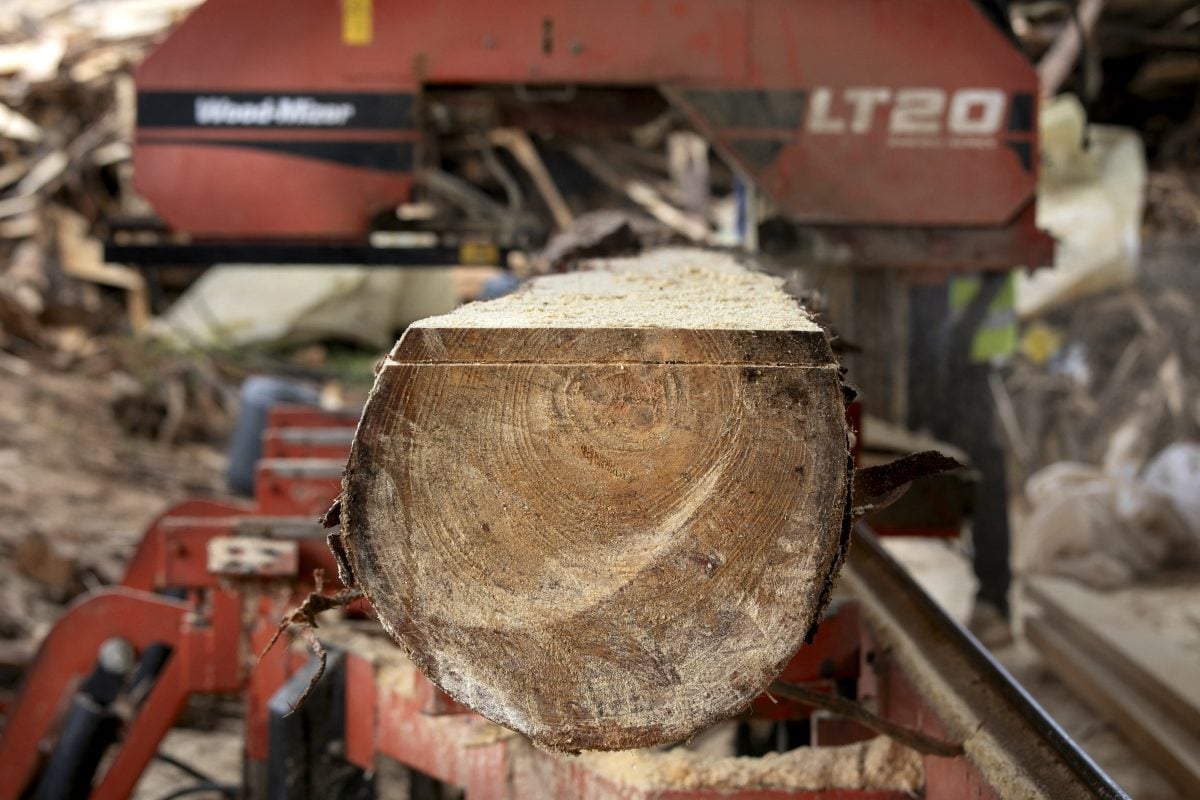International forestry investor New Forests made its first investment in South Africa in September, with a deal to acquire forestry and saw milling company Rance Timber. The deal sees the Australian-headquartered firm take a majority stake in the century-old business, which manages 14,000 hectares of pine plantations in the Eastern Cape province and has two sawmills.
“We see it as a great platform from which to grow within South Africa,” says Yida Kemoli, managing director for Africa at New Forests. “And we also see it as a great platform to explore new markets within South Africa, new markets within Africa as well.”
South Africa is not a heavily-forested country: by most estimates, less than 10% of its land area is forested, compared to well over 80% in some African countries. But it does have the continent’s most sophisticated commercial forestry industry, with by far the largest area of plantation forestry in the Southern African Development Community (SADC) region. The country also boasts an extensive value chain of processing industries that turn timber into finished products.
Kemoli believes the country’s forestry sector can progress to new heights.
“Actually, South Africa, from its existing base of a forestry industry, should be a leader,” he says – “a global player” alongside the likes of Australia, New Zealand and countries in the Americas that have developed large forestry sectors.
Finished products boost industry growth
John Maré, a former diplomat who now works as a business consultant covering forestry and other sectors, highlights a key difference between forestry in South Africa and that in the rest of the continent.
Most of Africa remains caught in a “colonial mode” of simply exporting raw materials; Maré notes that South Africa has been a “shining star” in developing value-added industries around timber. It has built a significant paper and pulp industry. It also manufactures wooden products such as flooring and furniture, along with wood-based fibres that can be used in clothing. A handful of South African companies, notably Sappi and Mondi, have become recognised brands in the sector.
These factors partly explain why New Forests has chosen to enter the country. “South Africa is a very strong export economy,” says Kemoli, who notes the country’s well-developed systems for trade and export. Increasing value-added timber exports from the continent is a “big target” for New Forests, he says.
The prospects of export-led growth are further strengthened by rising demand in the construction industry worldwide for wood products, which are increasingly viewed as more sustainable alternatives to concrete. The world’s tallest timber building is currently taking shape in Zanzibar.
“South Africa has more advanced mills and milling capacity compared to some of the other projects that we look at in the rest of Africa, which are more nascent. So it’s easier to start looking at exports out of South Africa,” says Kemoli.
Another area of revenue growth could be in carbon credits. Although plantations in South Africa have been slow to embrace the possibility of earning carbon credit revenues, Kemoli says New Forests will analyse the carbon potential of new assets it hopes to acquire in the country. He adds that selling carbon credits by producing biochar from timber residues is an another area with “huge potential” in the country.
Government support
The feeling of optimism around the South African forestry sector represents a marked contrast to sentiment just a few years ago.
“Historically, we were a sector that didn’t enjoy a lot of political support,” says Ronald Heath, director for research and protection at industry association Forestry South Africa. Forestry companies often complained, in particular, about onerous environmental conditions, including a convoluted system for acquiring licences to use water.
Yet Heath says that since President Cyril Ramaphosa took office the position of the sector has improved considerably.
“Since 2019, forestry has been one of nine sectors within the Public-Private Growth Initiative, which was a presidential initiative to get industry and government working closer together,” he says. “Through the masterplan, we see opportunity of expansion of probably about 150,000 hectares of new afforestation, and we’ve also seen significant actions on the recapitalisation of state-owned plantations, which have unfortunately gone into disarray. And with this additional almost 210,000 hectares, you can imagine the additional fibre that will flow into the processing side.”
Meanwhile, the industry has “much less” of a problem with water licences today. “That process has been streamlined significantly for our sector,” Heath says. The fact that New Forests, a major international investment manager in the sector, has chosen to invest in South Africa is another vote of confidence that should reinforce the positive mood.
“At the moment, there’s a very big positive sentiment in the sector,” says Heath. “If you have the political will and political support that we see now, it’s quite easy to start getting excited and optimistic about the sector.”
Shortage of industry specialists
Despite the relatively optimistic mood that surrounds the sector overall, significant challenges remain.
Maré says that while the government is now more supportive, and forestry minister Dion George is well-regarded in the sector, the Ministry of Forestry, Fisheries and the Environment remains “under-staffed and under-capacitated to perform”, with a shortage of forestry specialists.
And Heath highlights problems that are not specific to forestry, but which nevertheless have a knock-on effect on the sector. “The lack of rail capacity is one of our big constraints at the moment,” he says. “Unfortunately, that has a significant impact on input costs for our timber growers and on transporting the timber to processing plants.”
Transnet, South Africa’s state-owned rail operator, has been plagued by multiple difficulties in recent years, causing serious disruption for many export-oriented industries.
Mismanagement and corruption, which peaked in the era of “state capture” under President Jacob Zuma, ultimately led to maintenance problems stacking up across the rail network. Freight volumes declined by 34% between 2017 and 2023, although there are some signs that the operator is now beginning to recover.
Nor is the forestry sector immune from the security concerns that plague that country. “Crime is a big problem, not just the theft of timber, but also equipment theft and arson, and these are big problems that the industry needs to address with government structures,” says Heath.
He adds: “We’re engaging with government at all national and provincial levels, and we are seeing positive movement.”
Rural relevance
Solving these problems will be key if South Africa is to achieve its potential to build a globally significant forestry industry.
And while the growth of the forestry sector might not be transformative for the economy as a whole, Heath reminds us that it has an outsized importance in rural areas of the country.
“Although we only contribute 1% to gross domestic product and 4% to the manufacturing GDP, what is very important and quite unique from forestry is where we actually contribute this,” he says.
“Forestry is a rural-based industry. We are providing economic growth in some of the areas where we see the highest levels of poverty, the highest levels of unemployment. So although we are a small contributor in the national picture, if you consider the impact we’re having on the rural economy, that is significant.”

 Sign in with Google
Sign in with Google 



